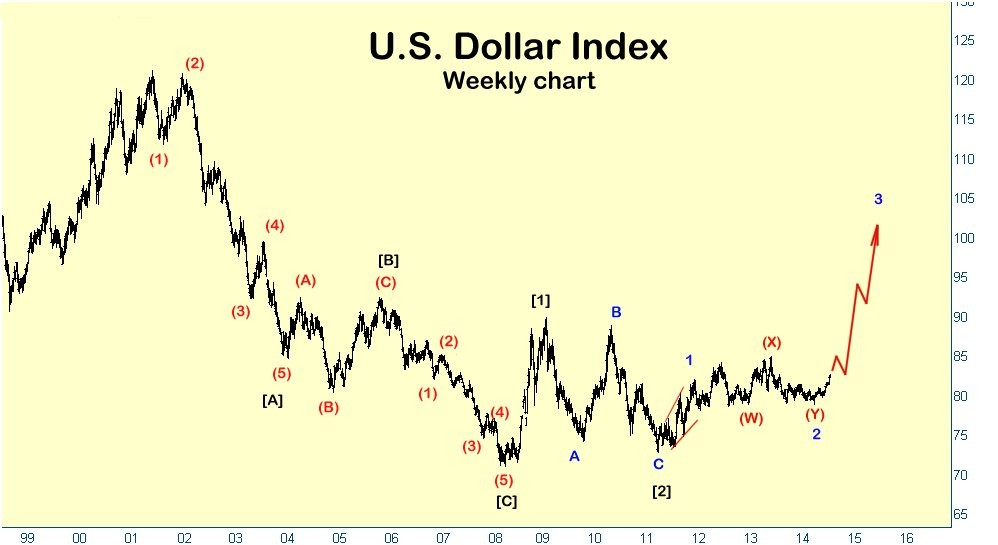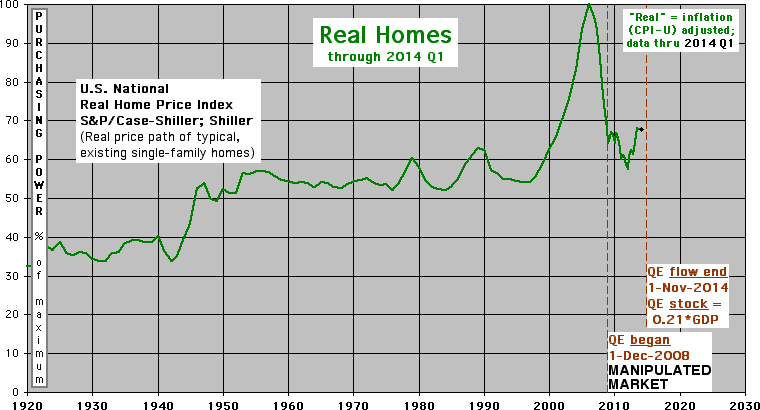Silent Crash Why the Real Value of the Dow Jones Industrials Matters the latest report from
Post on: 21 Сентябрь, 2015 No Comment

Silent Crash: Why the Real Value of the Dow Jones Industrials Matters
the latest report from Elliott Wave International
Editors note. by Sannleikur Komist
Throughout modern history, gold has been a common and generally accepted currency in every culture in the world. Until the advent of modern fiat money systems, gold was used both as a real currency and as a physical asset to backup the paper currencies of almost every first world country. Because of its long standing credibility as a commonly accepted currency, it still, today, has value in that regard and those who own physical gold have an asset which will likely stand the test of time no matter how the global currencies fair.
However, one of the problems with gold today is that its price floats relative to global fiat currencies. It floated upward for over a decade, reaching almost $2000 per troy ounce before it fell out of favor with the masses about two years ago and its price began to drop. To date its price has been as low as $1200 per ounce. But dont let the declining price of gold fool you into believing that the value of gold has declined even an iota. When measured against the value of the U.S. dollar, golds value has remained rock steady while the dollar has actually declined in value.
So how can the real value of gold be compared to the real value of the dollar, you ask? The answer is simple but surprising for many. Just calculate how much gold it takes to buy one share of each Dow Industrial component to how many dollars it takes. By doing so, what you are actually calculating is the real value of the Dow relative to real money, i.e. gold. And the result, if youve never seen it done before, is striking as you will see in the chart below.
In this latest report from Elliott Wave International, that is precisely what they have done. The touted amazing rise in stock market prices since the year 2000 is simply wealth effect, i.e. its a fraud its not real . The value of the stock market has been declining for almost 15 years, even as the shares prices have increased. This EWI report explains why
Silent Crash: Why the Real Value of the Dow Jones Industrials Matters
Priced in real value, the Dow has collapsed 84% since 1999
By Elliott Wave International
Stock market investors who glance at their screens see the dollar value of the Dow Industrials. Another way the way Elliott Wave International (EWI) prefers is real value, in terms of the things you can actually buy with your Dow shares, such as real money (gold) or a basket of commodities.
Clearly, one could ask: Why is the Dow priced in real value important? I buy things with dollars.
Lets look briefly at the nominal (dollar valued) Dow vs. the real Dow. Then we can address why the Dow measured in real value matters.
On July 16, the nominal Dow reached an all-time closing high of 17,138.20.
The value of the real Dow is not even close. Indeed, you may be in for a shock.
The Dow priced in real money-gold-topped in 1999 and has collapsed 84% since then . Had the U.S. maintained honest money, the Dow would be priced at 266 today .
The Elliott Wave Theorist. June 2014
Robert Prechter, founder and president of EWI, calls the collapse in the real value the Silent Crash.

The December 2006 Elliott Wave Theorist explains why the value of the real Dow matters. Take a look at this chart [updated in July 2008] and read the commentary:
What happens when a market declines in real terms but not in dollar terms? We have one really good example of when it happened in the past, and [above] is a picture of what was going on back in the early 70s. If you recall, from the 1970 low to the peak in January of 1973, the Dow made a new all-time high. It went above the old high of 996 and got to 1051 on a closing basis. There was a lot of optimism, just as there is today.
But if you look at this blue line, you will see that the real value of stocks was falling during the end of that rally, and falling from a higher point way back in 1966-68. So you had declining values in real terms with rising values in nominal terms.
How did it resolve? It resolved with a collapse from January 1973 to December 1974, a 47 percent decline in the Dow, 49 percent on the S&P. In other words, the nominal prices played catch-up with the plunging prices in real terms.
The Elliott Wave Theorist. December 2006
The set-up today is much bigger .
Prepare now for what EWI sees ahead by reading a special report for investors just like you, titled, The Nominal Dow: The Biggest Lie in Stock Market History. This must-read report is 100% free. See below for more details.
The Biggest Lie in Stock Market History REVEALED!
As Robert Prechter says, Bear markets always bring constricted time frames and breathtaking movements. You have to be ready for them.














